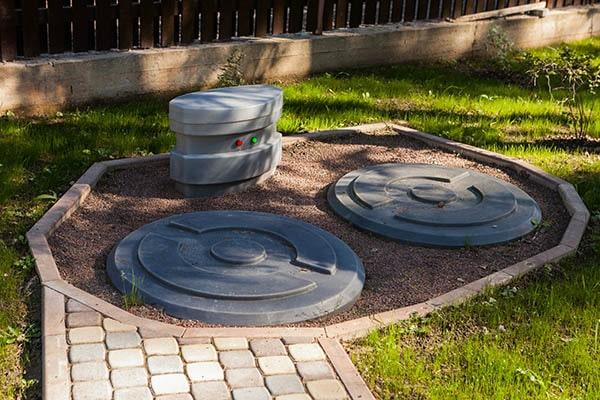What Kind of Pump Do I Need for My Septic Tank? A Complete Guide

Is your septic system acting up? Are you wondering what kind of pump do I need for my septic tank? Think of your septic pump as the heart of your system, moving waste where it needs to go.
Just like choosing the right heart surgeon, selecting the right pump requires careful consideration, and we're here to guide you through every step of this important decision.
Understanding the Basics of Septic Systems
Before diving into pump selection, let's understand how your septic system works. The National Environmental Health Association explains that a septic system is like a miniature ecosystem. Each component plays a vital role, with the pump acting as the central force that keeps everything moving smoothly.
Picture water flowing from your home into the septic tank. As it settles, it forms three distinct layers:
The top scum layer (oils and greases)
The middle liquid layer (relatively clear water)
The bottom sludge layer (heavy solids)
Types of Septic Tank Pumps
1. Effluent Pumps
These are the most common type. They work like a careful gardener, moving only the liquid while leaving the solids behind:
Move liquid waste (effluent) from tank to drain field with precision
Handle small solid particles up to 3/4 inch without strain
Work continuously without clogging, like a reliable workhorse
Ideal for most residential systems due to their efficiency
Operate at lower power, reducing energy costs
Perfect for standard septic systems
2. Sewage Ejector Pumps
These pumps are the workhorses of the septic world:
Handle larger solids up to 2 inches with ease
Work well for basement bathrooms and lower-level plumbing
Manage raw sewage effectively without clogging
Perfect for homes with below-grade plumbing systems
Built with heavy-duty materials for longer life
Ideal for complex plumbing situations
3. Grinder Pumps
Grinder pumps act like a powerful blender:
Break down waste into tiny particles, preventing clogs
Reduce clogging risks significantly
Work well for homes with garbage disposals
Ideal for long-distance waste transport needs
Perfect for complex plumbing layouts
Essential for systems with limited space
Understanding Pump Capacity and Flow Rates
The American Society of Plumbing Engineers emphasizes proper sizing calculations:
Daily Usage Calculations
Calculate daily water usage (typically 50-100 gallons per person)
Consider peak usage times during mornings and evenings
Factor in future household growth
Account for special fixtures like hot tubs
Include safety margins in calculations
Plan for seasonal variations
Flow Rate Requirements
Measure distance to drain field
Calculate elevation differences
Consider soil percolation rates
Factor in local climate conditions
Account for backup needs
Plan for peak demand periods
System Requirements and Selection Process
When deciding what kind of pump do I need for my septic tank, the Environmental Protection Agency recommends a systematic approach:
Physical System Requirements
Tank size and depth - larger tanks need more powerful pumps
Distance to drain field - longer distances require stronger pumps
Daily water usage - higher usage needs more pump capacity
Local regulations - some areas have specific requirements
Installation depth considerations
Accessibility for maintenance
Property Assessment
Your property's characteristics play a crucial role:
Ground slope affects required pump power
Soil type influences drainage patterns
Water table level impacts system design
Climate conditions affect pump operation
Landscape features may affect installation
Future development plans
Technical Specifications and Installation
The Hydraulic Institute provides comprehensive guidelines:
Power and Performance Requirements
Horsepower (typically 1/2 to 1 HP for residential use)
Flow rate (20-30 gallons per minute is common)
Head pressure requirements (based on elevation)
Voltage requirements (usually 115V or 230V)
Starting amp draw considerations
Operational efficiency ratings
Professional Installation Requirements
Professional certification requirements
Proper electrical connections and safety measures
Advanced alarm system integration
Proper ventilation system design
Regular maintenance scheduling
Emergency backup systems
Maintenance and Long-term Care
Preventive Maintenance Schedule
Rectangular depressions where soil has settled over time
Unusually green or lush grass patches
Exposed pipes, handles, or inspection ports
Previous excavation marks or disturbed soil
Concrete or metal covers partially visible
Distinct patterns in snow melt during winter
System Monitoring
Track pump runtime hours
Monitor energy consumption
Record maintenance activities
Document system performance
Track repair history
Update emergency contacts
Cost Analysis and Budgeting
Initial Investment
Pump purchase ($200-1000)
Professional installation ($500-2000)
Permits and inspections
Additional materials
Professional consultation fees
System modifications if needed
Long-term Operating Costs
Monthly electricity usage
Routine maintenance expenses
Replacement parts inventory
Emergency repair fund
Annual inspection fees
Insurance considerations
Environmental Considerations
Modern septic systems emphasize sustainability:
Energy-efficient pump designs
Water conservation features
Environmentally safe materials
Reduced carbon footprint
Sustainable operation practices
Eco-friendly maintenance products
Conclusion
Understanding what kind of pump do I need for my septic tank requires careful consideration of multiple factors. Think of it as choosing a vital organ for your home's waste management system. The right pump, properly installed and maintained, will provide years of reliable service.
Remember to consult with licensed professionals, follow local regulations, and maintain a regular service schedule. Your septic system is a significant investment in your property's infrastructure, and choosing the right pump is crucial for its long-term success.
Small Call to Action Headline

© 2025 | All Rights Reserved | Privacy Policy
